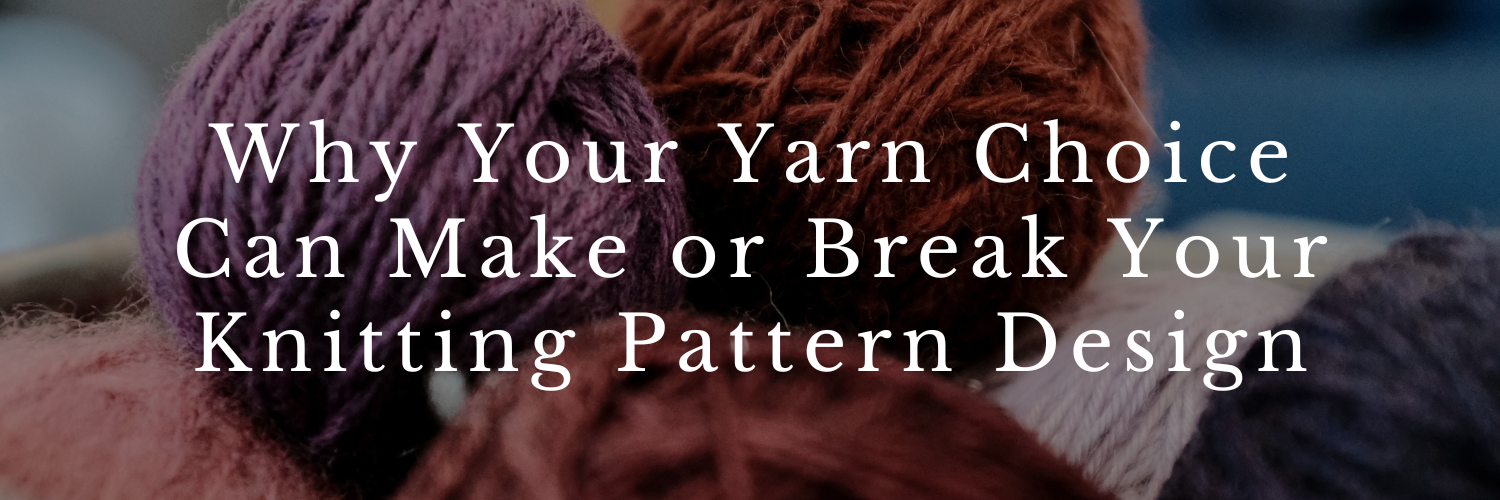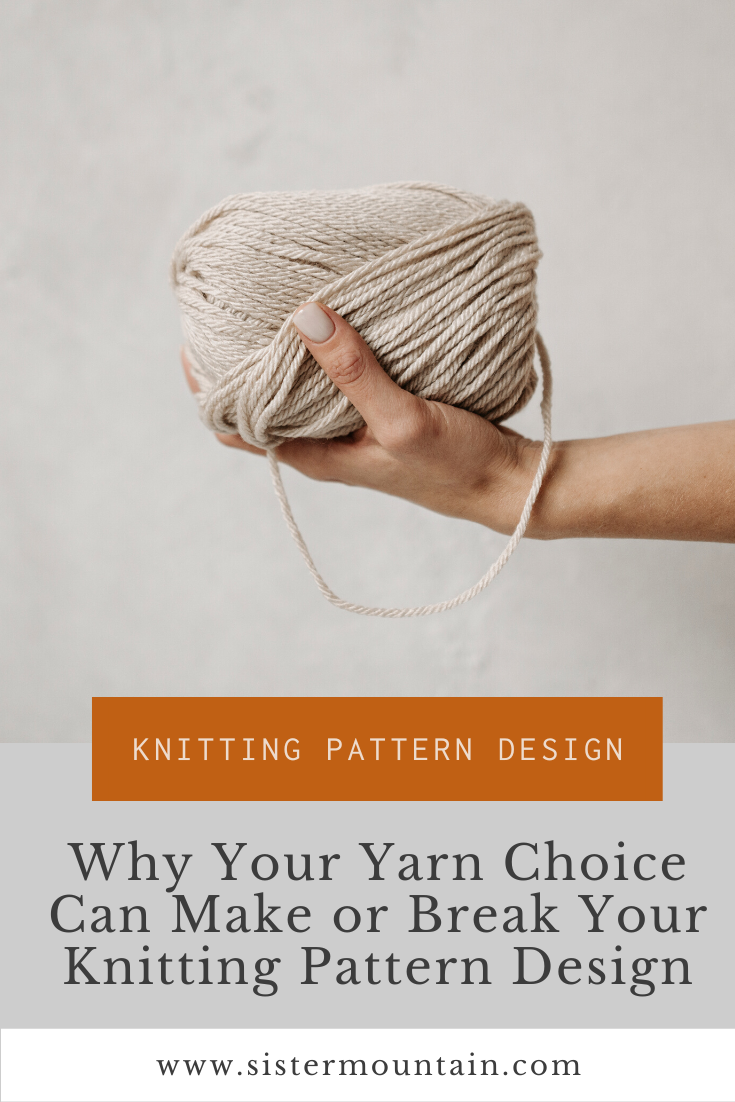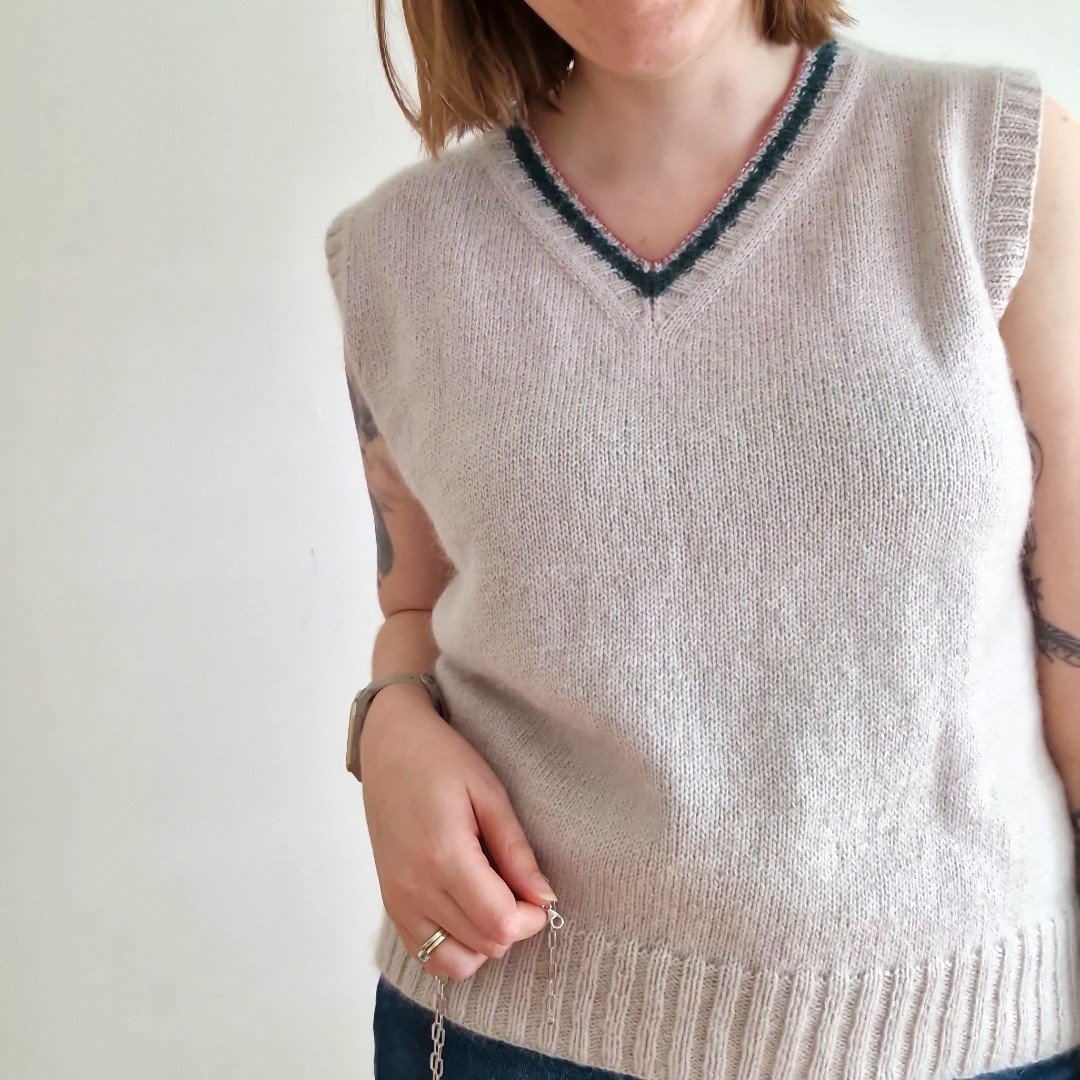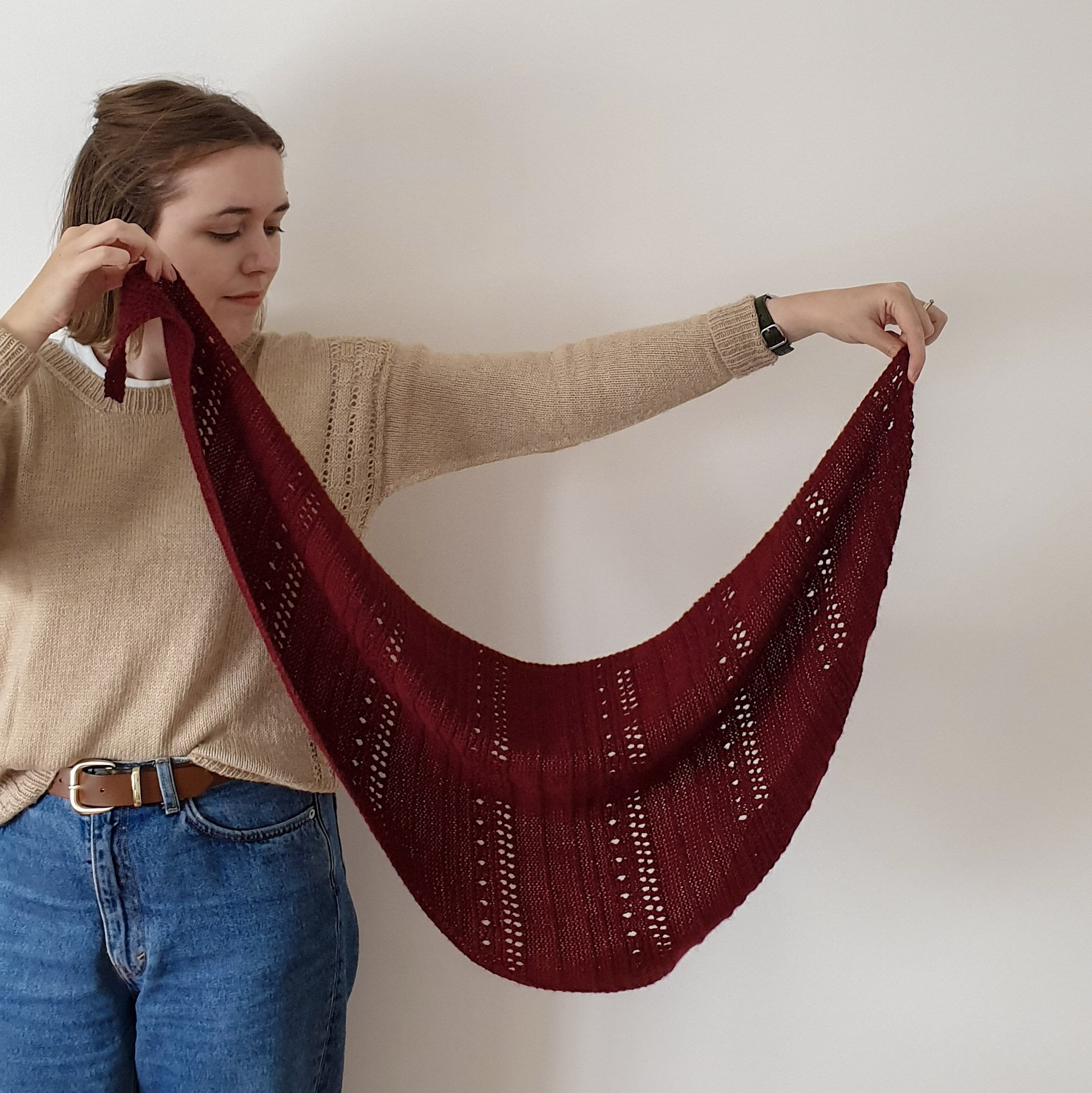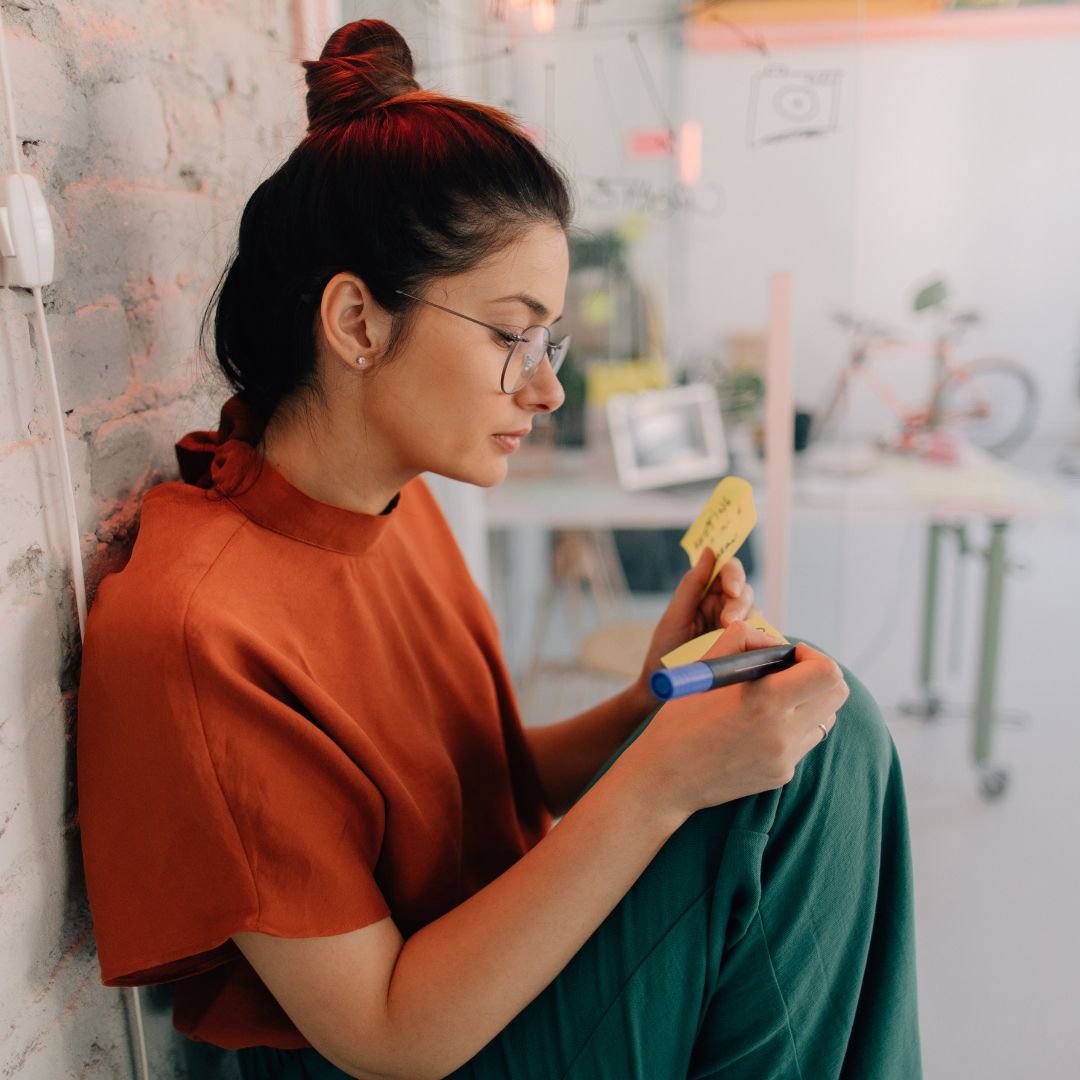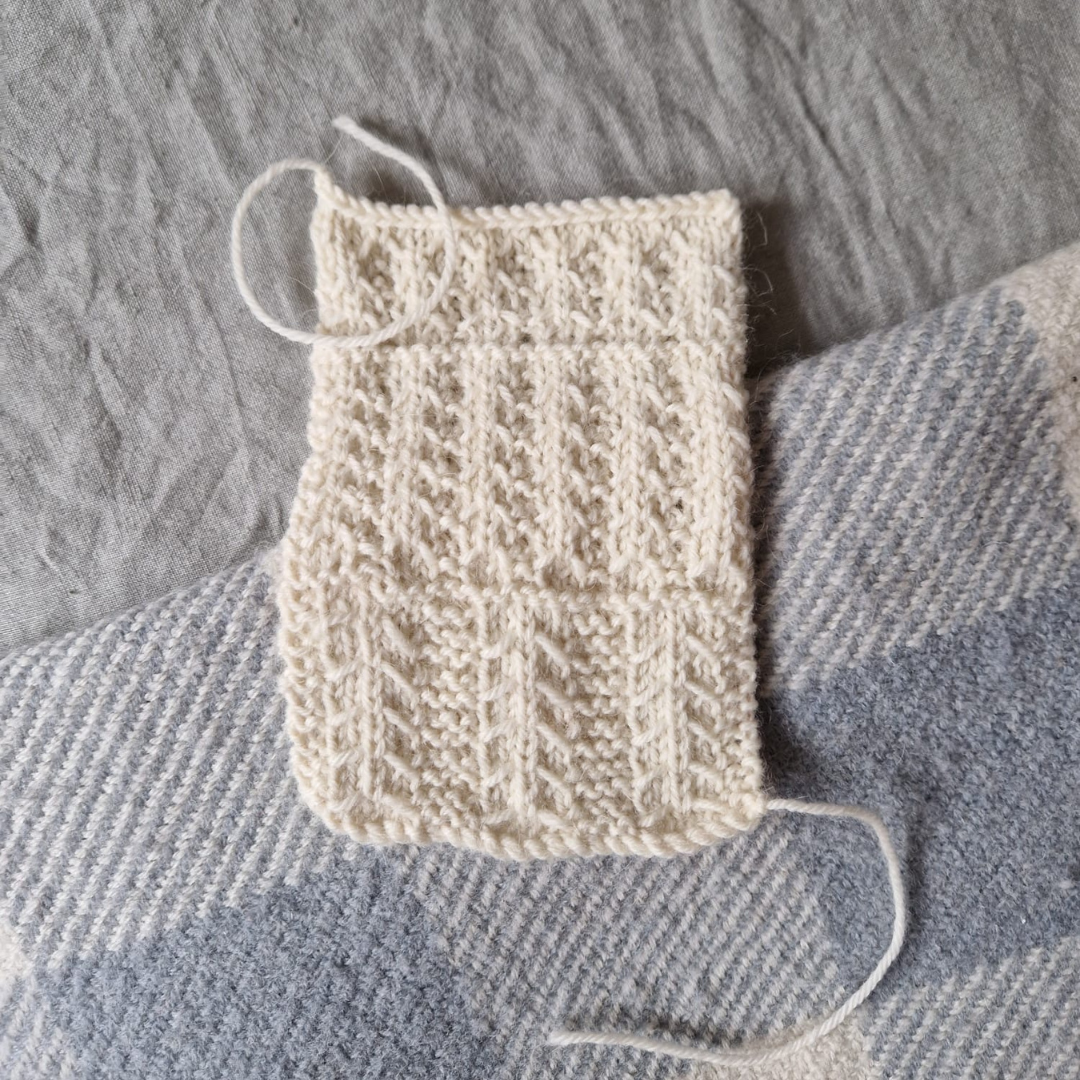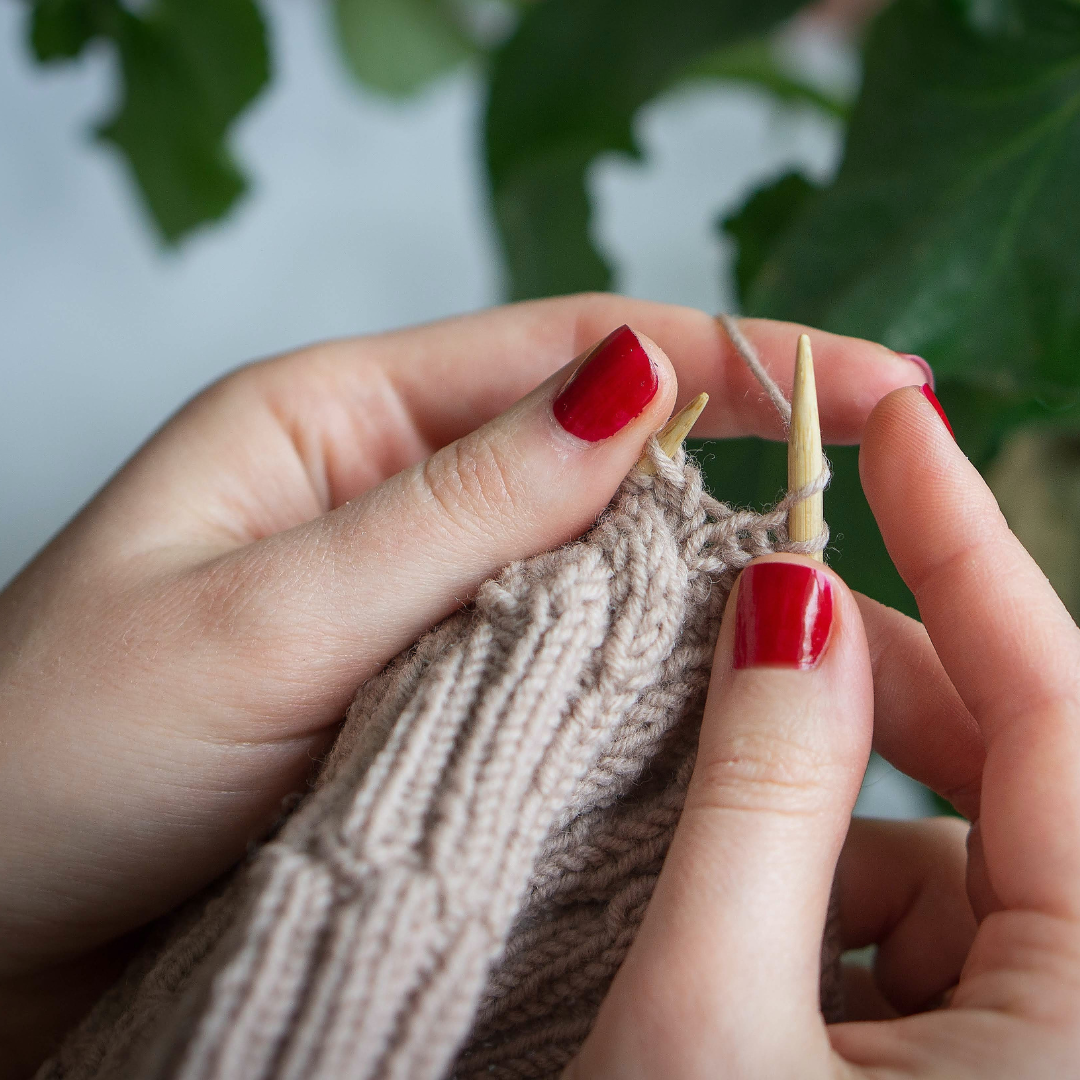Why Your Yarn Choice Can Make or Break Your Knitting Pattern Design
The yarn you choose for your new knitting pattern can either play the hero or the villain when it comes to the outcome of your project.
You spend countless hours and tons of effort dreaming up your design, grading it to multiple sizes, and rigorously testing and fine-tuning the pattern. Imagine putting in all this work only for your yarn choice to let you down. A poor yarn choice can make a beautiful design look bad and put prospective buyers off completely.
In this blog post, I’m going to explain why you need to put a lot of thought and consideration into the yarn you design your new knitting pattern in, as well as give you some tips on how to find the perfect match for your pattern.
Image description: photo of small yarn balls with the words “Why Your Yarn Choice Can Make or Break Your Knitting Pattern Design” on top of it
Why Your Yarn Choice is So Important When Designing Knitting Patterns
Have you ever knitted the same pattern twice but had one project come out tons better than the other? This is usually a result of your yarn choice.
A good yarn choice will emphasise all of the beautiful features of a design, such as the silhouette, stitch or motif and construction details. A poor yarn choice will hide them completely!
When a prospective customer is browsing through knitting patterns and sees your design, don’t you want them to see it as its absolute best? Knitters will automatically assume that the pattern photos are the best the design will look, so if the yarn makes the design look bad, they will think it's the pattern's fault and won’t buy it.
Now, imagine that you choose the perfect yarn pairing for your design. It holds the shape of the design’s silhouette nicely, highlights the gorgeous stitch pattern you’ve chosen and is well-suited to the type of garment or accessory. Of course, makers will be drawn to it!
Roots: A Cautionary Tale
My least popular design, Roots, was knitted in a yarn that doesn’t make the most of its design details.
To give this story context, I designed these socks for a wonderful publication championing sustainably-made yarn from small companies. They intentionally avoided using classic superwash sock yarn, which is coated in plastic. Instead, the yarn I was given was primarily mohair, which is very strong and beautiful but also very hairy!
The design I submitted was extremely textural - moss stitch, ribbing and travelling cables in stockinette and garter stitch. Ideally, it needed a very smooth yarn with excellent stitch definition to allow all of that texture to shine.
Instead, the mohair-based yarn softened the texture, making the overall effect quite blurry-looking. By contrast, some of my test knitters used a smoother yarn, and the result was much more attractive.
I don’t share this story to complain about this lovely publication’s yarn choice (because it was the right choice based on their values), nor the yarn itself (which is actually glorious and very well suited to simpler socks), but to show you that a bad yarn/pattern pairing will likely result in bad pattern sales.
Image description: a hand is outstretched holding a ball of beige yarn. The text overlay reads: Why Your Yarn Choice Can Make or Break Your Knitting Pattern Design
Consider What Your Design Needs
Before selecting the yarn you would like to use for your design, take a detailed look at your design and note down everything that it needs from the fabric.
Things to consider:
Will it be worn next to the skin or layered on top of another garment?
Does it need to be heavy or lightweight?
Does it need to be warm or cool to wear?
Does it need lots of elasticity or lots of drape?
Does it need to be hard-wearing, or can it be a little more delicate?
Is the design straightforward, or does it feature intricate details in the stitch or construction that should be highlighted?
Does your design require a lot of yarn or not very much?
Your answers to these questions will help inform your yarn choice later.
How to Find the Perfect Yarn Match for Your Knitting Pattern Design
Now that you know exactly what your design needs from its fabric, you can start looking at potential yarn options with specific characteristics to meet those needs. This will ensure that you make the best yarn choice that brings out the beauty of your knitting pattern design.
Handle
The handle of the yarn essentially means how the fabric feels when it’s knitted up. Yarn can range from very coarse, as used in practical carpets, to incredibly soft, like your special cashmere sweater.
If your design is likely to be worn directly next to the skin, as you would with a shawl or scarf, it will be more comfortable when designed in a soft yarn that is less likely to irritate sensitive skin.
Soft fibres include merino or lambswool (although some can be allergic), kid mohair, cashmere, silk, and alpaca.
If, on the other hand, you are designing a sweater or piece of outerwear that will be layered over other garments, you can select coarser yarns, as they won’t be worn directly against the skin.
Loft
The yarn's loft describes how much air is trapped in its fibres. You can quickly test how lofty a yarn is by pinching a strand between your fingers. If it compresses and bounces back, it is very lofty, whereas if it doesn’t compress at all, it has minimal loft.
High loft yarns tend to feel light and airy whilst feeling very warm, whilst low loft yarns feel much denser and will be less warm.
Memory
The memory of the yarn means how elastic it is: can it be stretched and bounce back to its original shape?
Most animal fibres, such as wool and cashmere, have good memory and will spring back into shape, but silk and all plant-based fibres will stretch out of shape and struggle to recover.
If your design features something that requires elasticity or memory, such as negative ease or snug ribbing, it is better to work with a yarn that has great memory.
Only some designs need this, though. Shawls and loose-fitting garments that use non-ribbed trims can work very well in yarns with less elasticity.
Strength
Some fibres are stronger than others, so if you are looking for something hard-wearing, choose a yarn that includes one of these fibres: wool, mohair, silk, cotton, linen or nylon.
Super-soft yarns like cashmere and alpaca are much less durable, so they are better used in designs for special occasions or in accessories that won’t receive too much wear and tear, such as shawls and scarves.
It is not just the fibre that affects the strength of the yarn, though. It is also in the way it is spun, as I will tell you in the next section.
Twist
The twist of the yarn describes how tightly or loosely the yarn has been spun.
Low-twist yarns are super lofty and cosy but can also break easily as they are essentially roving. This means that they don’t work well in designs that put stress on the yarn, such as cables, and are better suited to colourwork designs (think Icelandic knits) or plain knitting.
High-twist yarns are wonderfully strong, which is why they are often used in sock designs, and they give excellent stitch definition to highly textural fabrics. They aren’t as warm, though, since the twist removes most of the loft, so it’s worth considering what season you are designing for.
Another thing to note with high-twist yarns is that they can sometimes end up biasing when knitted in the round, so they are better suited to flat and seamed garments that give them a bit more structure.
Image description: a pile of sweaters with a variety of textures in shades of white and brown
Texture
The texture of your yarn should depend on the texture of your design.
If you are designing something with a lot of stockinette, the fabric's surface is smooth. If you want to emphasise that smoothness, you should choose a smooth yarn without too much texture; however, if you're going to use it as a canvas to highlight the texture of the yarn, you could go for something like a textural tweed or silk mohair.
Reverse stockinette is bumpier than regular stockinette, but if you want to highlight this even more, you can use a textured yarn such as a slub or a tweed, as the nubs often sit on the “purl” side of the fabric.
If your design features a beautiful texture or stitch pattern that you want to make a feature out of, avoid using textured or novelty yarns, as they will only blur the effect of the stitch and take attention away from the fabric.
Colour
Just as a textural yarn can draw attention away from a beautiful stitch, so can colour.
If your design has a complex fabric that you want to emphasise, don’t use a busy, variegated yarn. It will stand out a lot more in a solid colour.
If you are hesitant to use a solid colour, you could always choose a heathered yarn to get some subtle colour variance without detracting from the fabric.
You should also consider the commerciality of the colour you use in your sample. It needs to photograph well (it is the primary means of selling your knitting pattern, after all!), so avoid dark colours or even red which can make it difficult to depict the details in your design.
Consider what colours makers typically use in the type of project you are designing, and choose something relatively safe. Again, this is all about choosing a colour that lets your design sing. You might love lime green, but it’s pretty polarising, so you might get better sales with sage instead.
Cost
Think about the total cost of your design, whether it’s a single-sized accessory or a graded garment. Will the full price of the project be affordable to the average knitter?
It’s easy to get carried away with using high-end yarn as designers. Still, it can be off-putting when the total cost of knitting the design in the recommended yarn is up in the hundreds, especially if the knitter is not confident with making yarn substitutions. It can even result in someone not purchasing your pattern.
Consider affordability when making your yarn choice, particularly in garments that require lots of yardage.
You can go a little more luxurious with accessories, but try to offer good value to your customers when you can by ensuring they don’t end up with too much leftover yarn. I recently added an extra size to a new shawl pattern (my Winter Berry shawl!) to minimise leftover yarn and ensure that makers get as much shawl for their money as possible!
Go Through Your List
Remember when I said that you would be using the answers to the questions earlier to help you select your yarn? This is where that comes in. Read through all the yarn characteristics and start taking note of the types of yarn that might perfectly match your design. You’ll begin to notice patterns guiding you in the right direction.
Once you’ve done that, you’ll be ready to go yarn shopping!
You can’t skip swatching, though!
You thought you could get away without swatching here? Think again!
It’s all well and good to know the types of yarn that might work for your design, but the only way you will ever truly know how a yarn behaves is by knitting it up into a swatch - preferably a large one!
Image description: a textured swatch in charcoal coloured yarn on wooden needles.
Conclusion: Why Your Yarn Choice Can Make or Break Your Knitting Pattern Design
Even if you’ve had trouble selecting suitable yarns for your knitting pattern designs in the past, you now have all of the information you need to ensure that the yarn is the hero of your knitting pattern designs, not the villain.
It won’t always come easily to you, especially at first, but the more you design, the more confident you will become with picking the perfect yarn pairing for your patterns - and your sales will benefit from it, too!
What do you consider when choosing the yarn type for your knitting pattern designs? Do you have any tips I didn’t mention in this blog post? Share them in the comments below!
